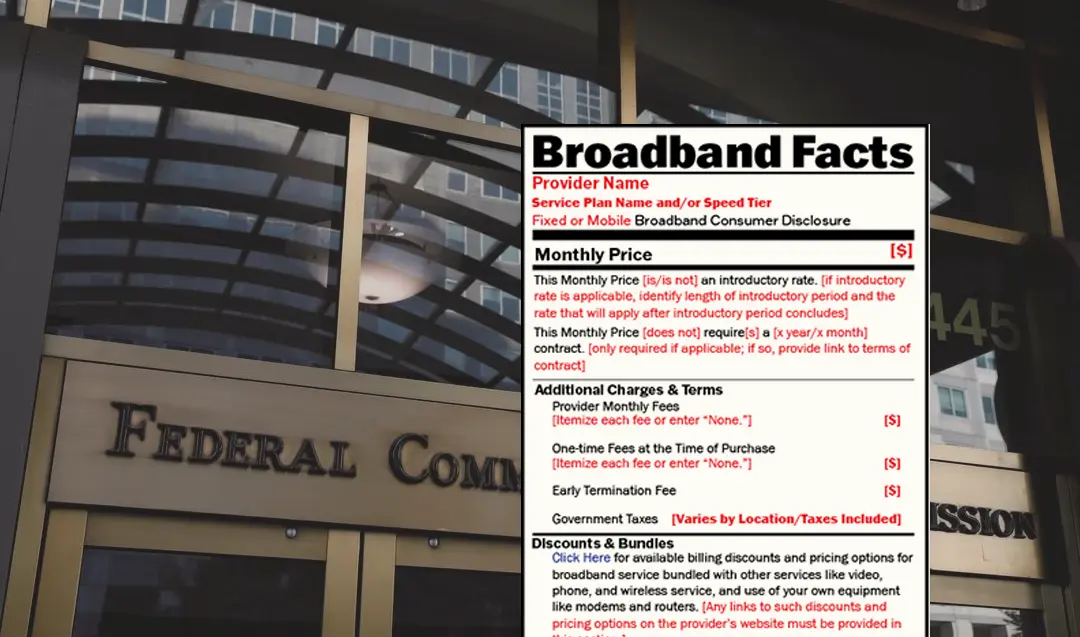


|
||
|
||

At the end of August, the FCC gave final approval to the requirement that ISPs must provide broadband labels. The FCC had originally approved the broadband labels in November 2022 but then received three petitions to further modify the rules. The recent order makes a few minor changes to the original order but largely leaves the original broadband label rules intact.
The labels were required as a provision of the Infrastructure Investment and Jobs Act. ISPs with more than 100,000 customers will have to start using the new labels within six months. All other ISPs have a year to implement. I think ISPs with fiber networks ought to issue the new labels quickly—it’s a chance to brag and compare your symmetrical capabilities against other technologies.
The new labels bear a resemblance to the nutrition labels on all processed foods. They mandate the inclusion of:
I can’t wait to see how the big ISPs are going to implement the labels. Marketing folks at the big ISPs must be dreading the requirement to disclose the list price of standalone broadband and the requirement to list extra fees like big charges for a WiFi router. It’s been standard practice for years for customers to buy broadband without getting even basic facts such as the price for the broadband after an introductory offer.
The labels are going to be a big challenge for the cable companies that still sell a huge number of product bundles. The cable companies have never told consumers the portion of the bundled price associated with any given product. But my interpretation of the label rules is that they will somehow have to identify the broadband price.
As usual, the FCC let the big ISPs off the hook on one of the major requirements. ISPs are only required to disclose the typical broadband speed and latency. I am willing to bet that the labels are going to look a lot like the marketing speeds that are reported to the FCC maps—and that can be very different than what is delivered. In the many surveys that my consulting firm has done over the years, consumers regularly tell us that they have no idea what speed they are supposed to be getting. From the many bills we’ve collected over the years, many ISPs also don’t disclose the speeds on the monthly bill.
I’m really curious about what ISPs are going to report for upload speeds. We’ve been seeing huge numbers of speed tests for ISPs that don’t deliver 20 Mbps, which has become the new practical standard to be considered as broadband—and which the new 5-Commissioner FCC is likely to soon make official. How many ISPs are going to honestly disclose upload speeds under 20 Mbps, which would be an admission that their product is not broadband?
There are ISPs using a few technologies that are going to really struggle with the label requirement. For example, there are a dozen factors that can influence the speed of DSL, and two adjacent homes can have a significantly different DSL experience. The speeds on all wireless technologies vary to some degree with differing environmental conditions. Speeds on the new FWA cellular broadband are highly dependent on the distance between a customer and the serving tower. Any ISP that has network bottlenecks will deliver different speeds at different times of the day, depending on how busy the network is.
ISPs also face the challenge of somehow balancing what they declare on the broadband label and what they report to the FCC mapping. ISPs know that most of the public likely never sees what they report to the FCC maps, but a lot of people are going to see broadband labels that must be prominently displayed on ISP websites. My guess is that most ISPs will claim the same speeds in both places. I think the whole intent of the labels was to invite public pushback against ISPs that are exaggerating performance.
Sponsored byCSC

Sponsored byVerisign

Sponsored byWhoisXML API

Sponsored byDNIB.com

Sponsored byVerisign

Sponsored byRadix

Sponsored byIPv4.Global
